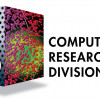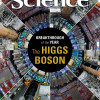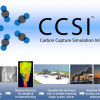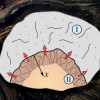News Center
Cosmic Message Received
Thanks to a sensitive space telescope and some sophisticated supercomputing, scientists from the international Planck collaboration have made the closest reading yet of the most ancient story in our universe: the cosmic microwave background. Read More »
CS Staff Contribute to SIAM
The annual SIAM Conference on Computational Science and Engineering is being held this week in Boston, MA. Contributions to the conference from Berkeley Lab Computing Sciences researchers are listed here. Read More »
A Massive Stellar Burst, Before the Supernova
An automated supernova hunt is shedding new light on the death sequence of massive stars—specifically, the kind that self-destruct in Type IIn supernova explosions. Digging through the Palomar Transient Factory (PTF) data archive housed at the Department of Energy’s NERSC at Berkeley Lab, astronomers have found the first causal evidence that these massive stars shed huge amounts of material in a “penultimate outburst” before final detonation as supernovae. Read More »
CRD’s Daniel Burke Elevated to IEEE Senior Member
Daniel Burke, who joined the Computational Research Division last fall as a project manager for the new Computer Architecture Lab, has been elevated to the grade of Senior Member of the IEEE this year. Senior Member is the highest professional grade of the IEEE for which a member may apply and only about 8 percent of IEEE’s 416,000 members have achieved this level. Read More »
Berkeley Lab's CRD Contributes to Breakthroughs of the Year
Every year, Science magazine editors and staff sift through numerous scientific accomplishments and ultimately crown one “Breakthrough of the Year.” Of the top 10 finalists for 2012, Lawrence Berkeley National Laboratory (Berkeley Lab) computational researchers were major contributors to two accomplishments, including the winner: Discovery of the Higgs Boson. Read More »
Berkeley Lab Computer Scientists Developing Tools to Reduce Greenhouse Gases at the Source
Berkeley Lab computational scientists are playing key roles in the management of the Carbon Capture Storage Initiative (CCSI) project and development of the computational tools. CCSI is developing computational tools to help researchers design cost-efficient systems that will reduce the amount of CO2 emissions spewing from coal-fired power plants. Read More »
Boverhof’s App Earns Honorable Mention in Amazon’s Web Services Competition
The Turbine Gateway, an application developed by the Computational Research Division’s Joshua Boverhof for DOE’s Carbon Capture Simulation Initiative, recently earned honorable mention in a competition sponsored by Amazon Web Services(AWS). Amazon officially announced the winners of its EC2 Spotathon on Monday, Dec. 10. Read More »
CRD Researchers Receive 2013 INCITE Allocations
Two researchers from the Computational Research Division are principal investigators and four are co-investigators on projects receiving large allocations of computer time in 2013 under DOE’s INCITE program. Read More »
Can We Accurately Model Fluid Flow in Shale?
Shale is a sedimentary rock consisting of layered, fine-grained clay minerals and, often, organic matter such as kerogen, the source of oil and gas. Now, CRD researchers have developed a new mathematical model that incorporates kerogen in calculating how gas and oil become available and how long a reservoir is liable to keep producing. Read More »

















